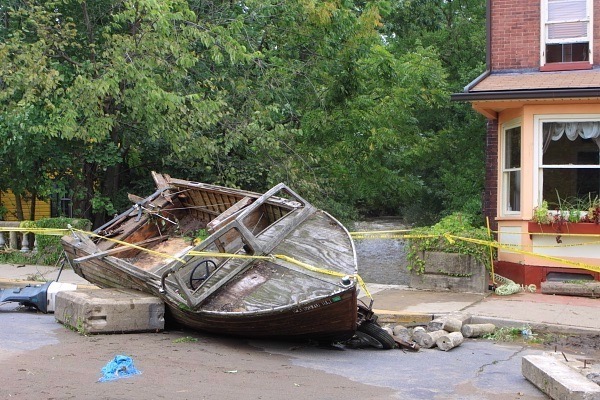Department Of Community Affairs Rejection Of Elevation Of Homes Contradicts DEP Flood Regulations
DCA Recognizes Climate Science – Takes Baby Step Towards Strategic Retreat Policy
On July 17, 2023, the Murphy DEP adopted new flood rules.
I strongly criticized those rules as deeply flawed and obsolete, see:
- Murphy DEP Flood Rules Are Full Of Holes And DEP Responses To Critics Are Based On Lies
- Current Rainfall And Flood Elevations Already Exceed DEP’s Obsolete Standards
- DEP Failed To Consider And Restrict Land Use In Flood Hazard Areas
The DEP openly admits that they have abdicated and violated statutory mandates (“shall”) to study, delineate flood hazard areas based on best available science, and regulate land use and development.
But the DEP flood rule got strong praise by environmental groups and NJ media, including NJ Spotlight, e.g. see:
The rule uses updated flood projections based on forecasts for a warmer and wetter future as a result of climate change. It requires the use of precipitation projections when calculating flood elevations; ensures that DEP permits for building in flood zones conform to construction codes and federal flood-insurance requirements and requires the use of best practices to manage runoff in current and future storms.
Now, just seeks later, today, NJ Spotlight wrote about a hugely significant new State policy on flood management adopted by the Department of Community Affairs (DCA).
The new State policy prohibits the use of federal FEMA disaster assistance funds for elevating homes in Manville, NJ, see:
This is a historic moment: The State of NJ finally recognized climate science and took the first baby step – in just one town, and with only federal money – towards a policy of “strategic retreat”. FEMA disaster assistance money can not be spent on elevating homes, only on buyouts.
That new DCA policy validates my criticisms of DEP flood rules and it directly contradicts DEP regulatory policy and the prior favorable reporting by NJ Spotlight.
Let me be specific: 1) DEP rules rely on elevation (not land use restriction). 2) DEP rules are based on the historical 100 year flood not actual flood elevations. 3) DEP rules fail to reflect climate science. 4) DEP fails to map known flood risk areas.
The DEP regulatory standards and policy directly contradict the DCA policy on buyouts. The DEP’s own statements and science cited in today’s NJ Spotlight story contradict the basis for their own regulations. Here are few bulleted excerpts from today’s story that illustrate those contradictions, e.g.
“The new policy, which so far only applies to Manville, is based on a recognition that elevation does not fully protect the most exposed homes” …
“Elevating these homes or the surrounding homes simply would not fully mitigate these types of dangers,”
“many homes in unmapped floodplains are being impacted by severe storms and flooding”
“Past flood prediction tools are no longer sufficient,” the agency [DEP] said.”
The ‘new policy” and DEP statements directly contradict the entire approach and basis for the DEP’s flood rules and expose EXACTLY the flaws and criticisms I’ve long made of the DEP’s flooding program (e.g. inadequate flood mapping, technical standards reliant on the 100 year flood instead of climate science, limit to elevation instead of land use restrictions, etc).
NJ Spotlight not only fail to note the flat out contradiction on elevation and total DEP regulatory failure, the reporting effectively PRAISES the DEP (by noting the economic impact analysis of the rule and unnamed environmental group support of Blue Acres). Spotlight today merely said this:
In the 437-page rule, the DEP said the aim is to protect the public by recognizing current climate realities.
“The rules ensure the use of current precipitation data and reliable climate science to aid New Jersey communities in better preparing to confront climate change induced increases in the intensity of precipitation events and the resulting effects of additional stormwater runoff on stormwater management systems and flood elevations in fluvial areas. The rules incorporate climate-informed precipitation data to better align with current precipitation conditions,” it said.
Spotlight turned criticism into praise and missed the whole story.
That’s actually hard to do.
So let me bury the lead in this conclusion:
The new DCA policy on elevation in Manville exposes the literally fatal flaws of DEP regulations, which are Statewide in scope.
As a result, thousands of existing homeowners are at risk and don’t know it; thousands of homes will be elevated but remain at risk, and thousands of new homes built in unsafe flood prone locations allowed under DEP’s regulations.
The results of that will be more repeat flood claims, more flood destruction, more deaths, billions of dollars wasted, and more human suffering.

